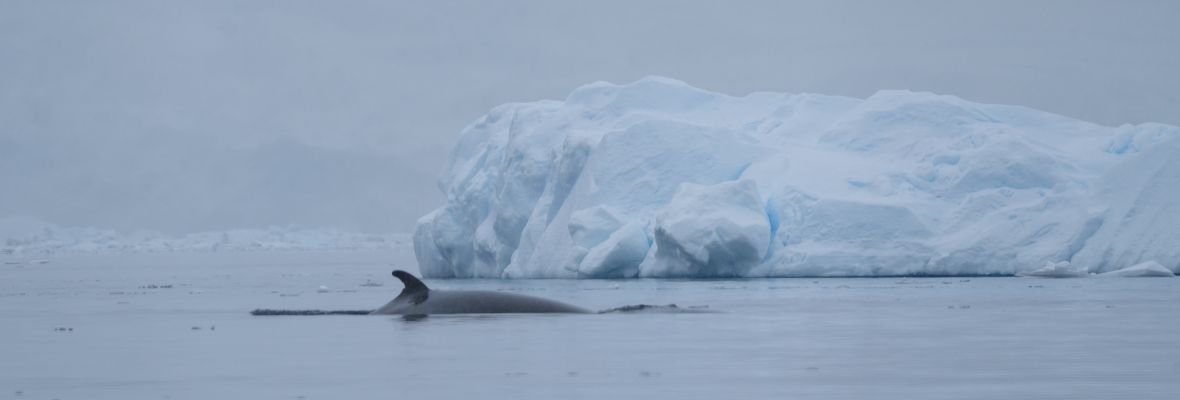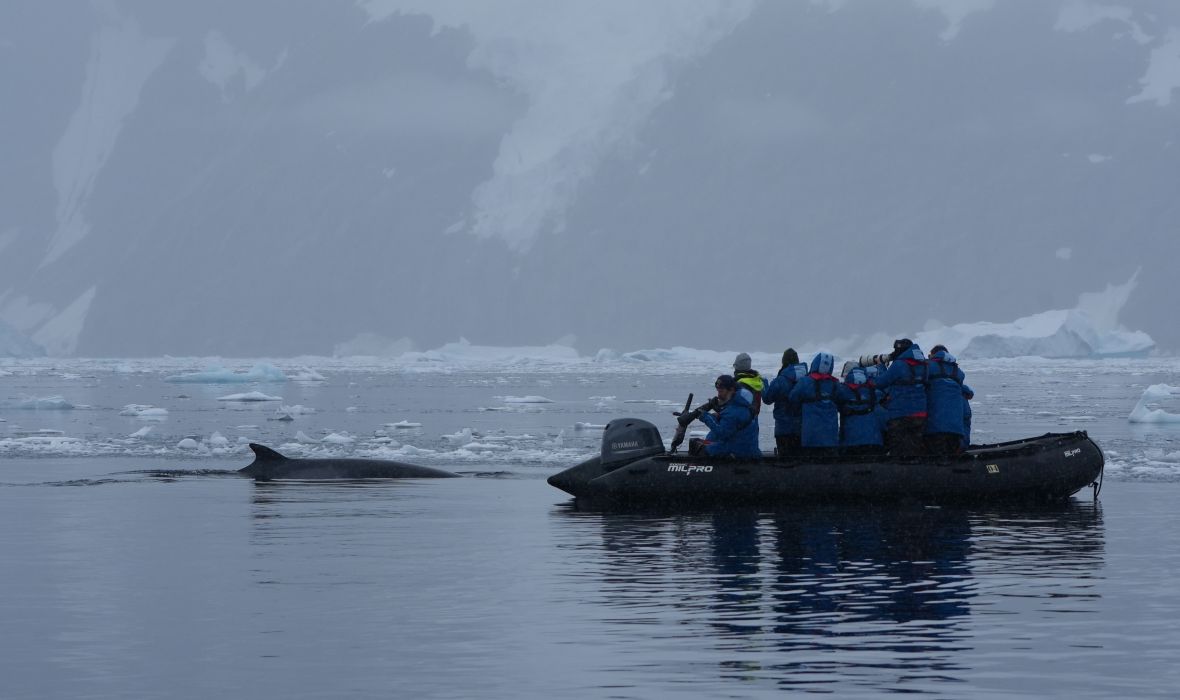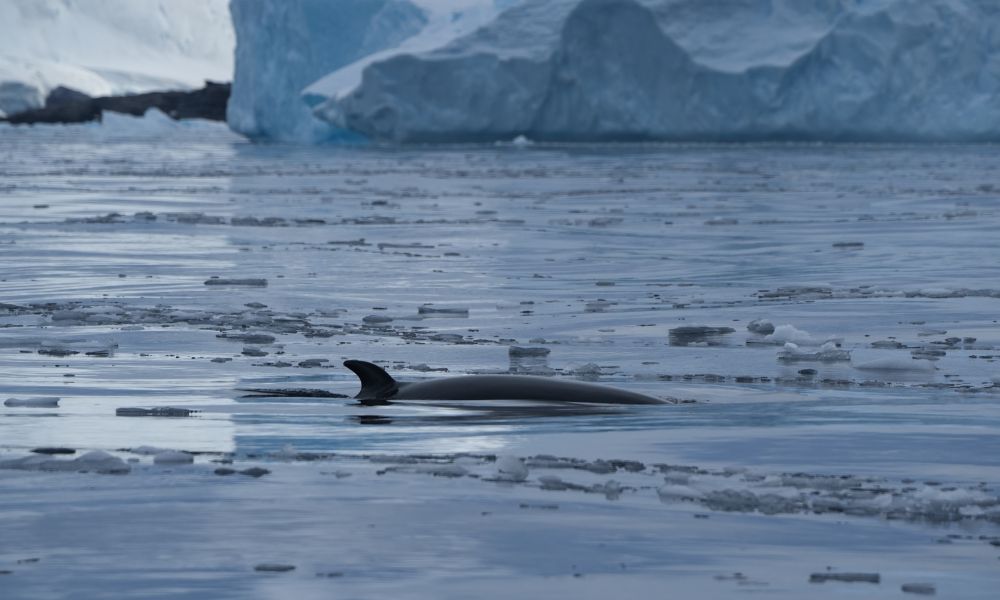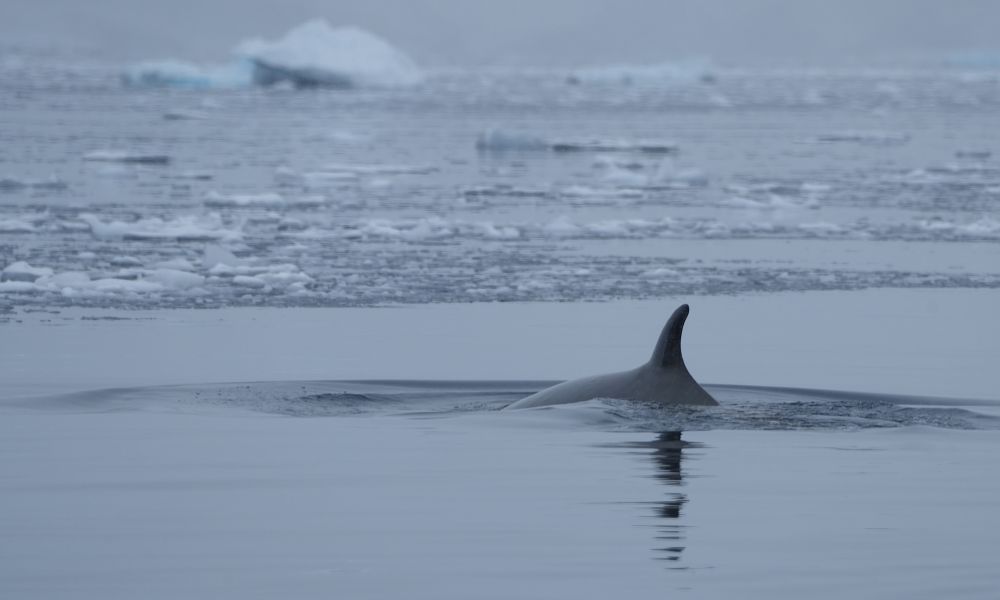How big is a minke whale?
The minke whale, the smallest whale among the rorqual species, typically measures between 7-10 meters (23–33 feet) in length. Males are slightly smaller than females, and newborn calves are around 2.5 meters (8–9 feet) long.
What does a minke whale look like?
In addition to the significantly smaller size, the common minke whale features a distinct white band on each flipper, which contrasts with their deep grey dorsal colour. They possess a uniquely triangular, narrow, and pointed snout, earning them the nicknames "sharp-headed finner" and "little piked whale".
What does the minke whale eat?
The minke whale's diet mainly consists of larger fish, such as herring, when these are available, but is also supplemented by krill. Its short baleen plates help filter this prey from seawater during feeding dives. When food is plentiful, they can be seen in pods of up to 100 animals.
Where does the minke whale live?
From the Arctic to Antarctica, the minke whale's habitat spans all the world's oceans. It is found in the North Atlantic and North Pacific, including waters around Iceland, Norway, Canada, Greenland, Svalbard, and Scotland.
How does the minke whale's size compare to other rorqual whale species?
Considered the smallest of the rorqual whales, the minke whale is significantly smaller than its whale relatives:
- Blue whale: Up to 26 meters (85 ft)
- Fin whale: Up to 18–22 meters (59–72 ft)
- Humpback whale: Up to 11–15 meters (35–50 ft)
- Minke whale: 7–10 meters (23–33 ft)
What are minke whale predators?
Killer whales are the primary natural predators of the common minke whales, particularly targeting juveniles. They are also targets of commercial whaling, accidental capture in fishing gear, and pollution.
Is the minke whale endangered?
The common minke whale is not considered endangered and is listed as “Least Concern” by the IUCN. However, the species remains threatened by whaling, which continues in the North Atlantic and Antarctic, with an annual catch of 500-1,000 animals by countries such as Norway, Japan, and Iceland.






